 W
WAlgeria has more than 45 independent Arabic language and French language publications as well as 4 government-owned newspapers, but the government controls most printing presses and advertising. The Algerian newspapers with the largest circulations are Echourouk (1,800,000), Ennahar (1,600,000), El Khabar (1,000,000) and Quotidien d'Oran (700,000); all four are employee-owned. The government also owns all radio and television outlets, which provide pro-government programming. In 2004 and 2005, the government increased the access of Berber language and culture to both print and broadcast media.
 W
WThe mass media in Angola is primarily controlled by Angola's dominant political party, the People's Movement for the Liberation of Angola (MPLA).
 W
WAustralia has a modern and diverse media industry spanning traditional and digital formats, and catering mostly to its predominantly English-speaking population. In 2018 the Press Freedom Index ranked Australia 19th out of 180 countries, although by 2020 Australia's ranking had somewhat declined to 26th out of 180 countries.
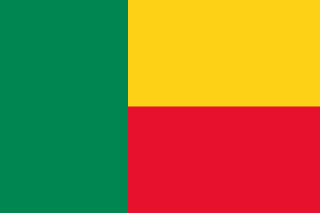 W
WMass media in Benin was formerly controlled by the government but there has been a loosening of control since the introduction of democracy to the country in the 1990s.
 W
WThe mass media of Bosnia and Herzegovina refers to mass media outlets based in Bosnia and Herzegovina (BiH). Television, radio, magazines and newspapers are all operated by both state-owned and for-profit corporations which depend on advertising, subscription, and other sales-related revenues. The Constitution of Bosnia and Herzegovina guarantees freedom of speech, although political and business pressures - coupled with administrative fragmentation - still hinder the independence of journalists and media outlets.
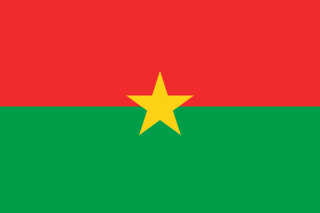 W
WThe mass media in Burkina Faso consists of print media and state-supported radio, news, and television stations, along with several private broadcasters with programs consisting of sports, music, cultural, or religious themes.
 W
WMass media in Burundi is controlled by the government.
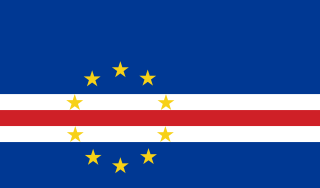 W
WThis article is about the mass media in Cape Verde including its telecommunications, television and radio.
 W
WMass media in Colombia refers to Mass media available in Colombia consisting of several different types of communications media: television, radio, cinema, newspapers, magazines, and Internet-based Web sites. Colombia also has a national music industry.
 W
WAs recently as the early 1980s, the Comoros had no national media. State-run Radio Comoros, transmitting from Grand Comore, was not strong enough to send clear signals to the republic's other two islands.
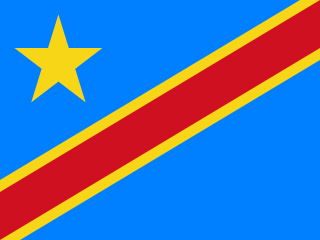 W
WMass media in the Democratic Republic of the Congo are both nationally and internationally state owned and operated.
 W
WThe mass media in Croatia refers to mass media outlets based in Croatia. Television, magazines, and newspapers are all operated by both state-owned and for-profit corporations which depend on advertising, subscription, and other sales-related revenues. The Constitution of Croatia guarantees freedom of speech and Croatia ranked 63rd in the 2016 Press Freedom Index report compiled by Reporters Without Borders, falling by 5 places if compared to the 2015 Index.
 W
WThe mass media in Cuba consist of several different types: television, radio, newspapers, and internet. The Cuban media are tightly controlled by the Cuban government led by the Communist Party of Cuba (PCC) in the past five decades. The PCC strictly censors news, information and commentary, and restricts dissemination of foreign publications to tourist hotels. Journalists must operate within the confines of laws against anti-government propaganda and the insulting of officials, which carry penalties of up to three years in prison. Private ownership of broadcast media is prohibited, and the government owns all mainstream media outlets.
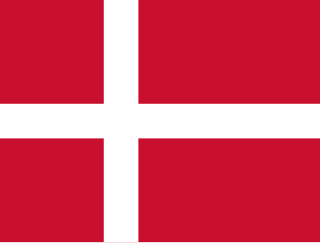 W
WDenmark, officially the Kingdom of Denmark, is a Nordic country in Northern Europe. Denmark proper, which is the southernmost of the Scandinavian countries, consists of a peninsula, Jutland, and an archipelago of 443 named islands, with the largest being Zealand, Funen and the North Jutlandic Island. The islands are characterised by flat, arable land and sandy coasts, low elevation and a temperate climate. Denmark lies southwest of Sweden and south of Norway, and is bordered to the south by Germany. The Kingdom of Denmark is constitutionally a unitary state comprising Denmark proper and the two autonomous territories in the North Atlantic Ocean: the Faroe Islands and Greenland. Denmark has a total area of 42,943 km2 (16,580 sq mi) as of 2020, and the total area including Greenland and the Faroe Islands is 2,210,579 km2 (853,509 sq mi). Denmark proper has a population of 5.83 million.
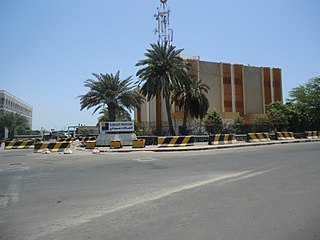 W
WMass media in Djibouti is controlled by the government.
 W
WThe Mass media in Egypt is highly influential in Egypt and in the Arab World, attributed to its large audience and its historically TV and film industry supplies to the Arab-speaking world. A period of ease on media marked the last years of Hosni Mubarak's rule, but since the 2011 revolution and 2013 coup d'état, Reporters Without Borders said "successive governments have tried to control the media and have not hesitated to impose measures restricting journalists' freedom," in 2016, and "the situation of media freedom in Egypt is extremely worrying" in 2017. and while state media is "almost always loyal to President al-Sisi." and most pro-Islamist media have been closed, or now broadcast from abroad, journalists and human rights defenders are denied access to parts of Sinai region, and are obliged to report only the official version of "terrorist" attacks under the terrorism law that was adopted in August 2015. Following the 2011 revolution, acquisitions of media outlets and private newspapers by businessmen linked to the government started surfacing, initially with close ties to the newly in-power Muslim Brotherhood, businessmen then shifted in 2013 with the deposition of former President Mohamed Morsi to Gen. Abdel Fattah al-Sisi's support and regime. In 2016 the take over by businessmen linked to the government and intelligence services escalated rapidly; and the regime's domination of the media is affecting even pro-government media. In addition to those acquisitions, the government tapped into the market with a major new TV network named "DMC" with a range of news, sports and entertainment channels changing the landscape beyond the "official" outlets that lost their credibility, DMC also imposed a de facto monopoly over filming where other privately owned TV channels are denied access. On the internet, Egypt banned at least 62 websites in a crackdown in June 2017, including Daily Sabah, Medium, Al Jazeera, The Huffington Post, and Mada Masr along with opposition websites, like El-Badil, for containing material that "support terrorism and extremism as well as publish lies", that blockade was followed by a growing list of censorship circumvention and VPN providing websites in addition to the blockade of OpenVPN protocol on a nationscale. The crackdown was condemned by the Association for Freedom of Thought and Expression (AFTE), Mada Masr and by the Index on Censorship. The ATFE stated that "the blocking of websites violates the Egyptian Constitution". The country saw a period of increasing freedom from governmental control during last years of ousted president Hosni Mubarak. Although Freedom of the media is guaranteed in the constitution, and the government was increasingly respecting this, however many laws still remain that restrict this right. Back in 2005, and after the Egyptian presidential election, Ahmed Selim, office director for Information Minister Anas al-Fiqi, declared the era of "free, transparent and independent Egyptian media".
 W
WThe mass media in Ethiopia consist of radio, television and the Internet, which remain under the control of the Ethiopian government, as well as private newspapers and magazines. Ten radio broadcast stations, eight AM and two shortwave, are licensed to operate in Ethiopia. The major radio broadcasting stations include Radio Fana a private station, Radio Voice of One Free Ethiopia, and the Voice of the Revolution of Tigray. The only terrestrial (broadcast) television networks are government owned and include Ethiopian Television and other regional stations. In keeping with government policy, radio broadcasts occur in a variety of languages including Amharic, Afaan Oromo, Tigrigna, and more. There are also many video sharing websites which are a popular way of getting information as well as entertainment in Ethiopia.
 W
WThe mass media in Ghana, includes television, radio, internet publishing and newspapers.
 W
WThe mass media in Indonesia consist of several different types of communications media: television, radio, cinema, newspapers, magazines, and Internet-based websites.
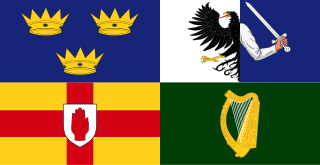 W
WDue to the shared history of the Republic of Ireland and Northern Ireland, there are many shared mass media outlets between them on the island of Ireland.
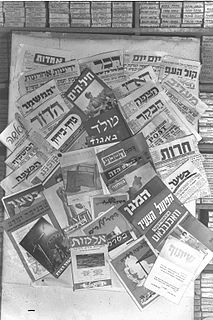 W
WThe mass media in Israel refers to print, broadcast and online media available in the State of Israel. The country boasts dozens of newspapers, magazines, and radio stations, which play an important role by the press in political, social and cultural life and cater it to a modern, developed and literate society.
 W
WThe mass media in Japan include numerous television and radio networks as well as newspapers and magazines in Japan. For the most part, television networks were established based on capital investments by existing radio networks. Variety shows, serial dramas, and news constitute a large percentage of Japanese evening shows.
 W
WMass media in Kenya includes more than 91 FM stations, more than 64 free to view TV stations, and an unconfirmed number of print newspapers and magazines. Publications mainly use English as their primary language of communication, with some media houses employing Swahili. Vernacular or community-based languages are commonly used in broadcast media; mostly radio.
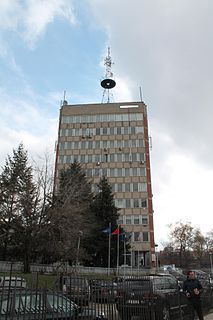 W
WThe mass media in Kosovo consists of different kinds of communicative media such as radio, television, newspapers, and internet web sites. Most of the media survive from advertising and subscriptions.
 W
WThe mass media in Kyrgyzstan experience greater freedom compared to neighbouring countries in the region, and the constitution guarantees freedom of the press and prohibits censorship. However, the media are still restricted by the government. The OSCE issued a report on the ethical standards in print and online media of Kyrgyzstan.
 W
WMass media in Liberia include the press, radio, television, fixed and mobile telephones, and the Internet.
 W
WThe mass media in Malaysia includes television, radio, newspapers, and web-based media such as bloggers. Many media outlets are either owned directly by the government of Malaysia or owned by component parties of the Barisan Nasional coalition which formed the government until May 2018. Opposition parties PAS and PKR, now the main parties of the ruling "Pakatan Harapan" coalition, publish their own newspapers, Harakah and Suara Keadilan, respectively, which are openly sold alongside regular publications.
 W
WMass media in Mexico are regulated by the Secretariat of Communication and Transportation, a federal executive cabinet ministry and by the Federal Telecommunications Institute.
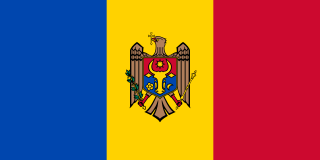 W
WThe mass media in Moldova refers to mass media outlets based in the Republic of Moldova. Television, magazines, and newspapers are all operated by both state-owned and for-profit corporations which depend on advertising, subscription, and other sales-related revenues. The Constitution of Moldova guarantees freedom of speech. As a country in transition, Moldova's media system is under transformation.For the situation in the separatist republic of Transnistria, see Media of Transnistria
 W
WThe mass media in Mongolia refers to the print, broadcast and online media in Mongolia. Since the collapse of the Soviet style system in 1990, the media has undergone large reforms which have allowed greater diversity and freedom of the press which make it one of the most free in the region. Censorship of media outlets is forbidden under the 1998 Media Freedom Law. In its 2013 report, Reporters Without Borders classified the media environment as 98th out of 179, with 1st being most free.
 W
WMass media in Nigeria has an interesting and long history.
 W
WIDL-Reporteros is an online newspaper based in Lima, Peru that specializes in investigative journalism against corruption in Peru and to promote transparency with the nation. Since its founding, the newspaper has initiated over 500 investigations throughout Peru.
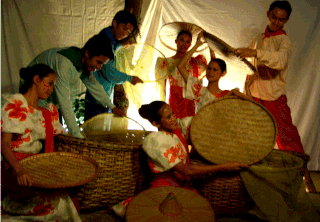 W
WIn 2004, the Philippines had 225 television stations, 369 AM radio broadcast stations, 583 FM radio broadcast stations, 10 internet radio stations, 5 shortwave stations and 7 million newspapers in circulation.
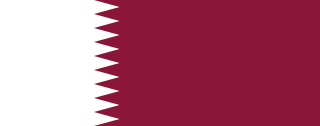 W
WThe mass media in Qatar relays information and data in Qatar by means of television, radio, cinema, newspapers, magazines and the internet. Qatar has established itself as a leading regional figure in mass media over the past decade. Al Jazeera, a global news network which was established in 1996, has become the foundation of the media sector. The country uses media to brand itself and raise its international profile.
 W
WThe mass media in Russia refers to mass media outlets based in the Russian Federation. The media of Russia is diverse, with a wide range of broadcast and print outlets available to the consumers. Television, magazines, and newspapers are all operated by both state-owned and for-profit corporations which depend on advertising, subscription, and other sales-related revenues. Even though the Constitution of Russia guarantees freedom of speech the country is plagued by both government and self-censorship. As a country in transition, Russia's media system is under transformation.
 W
WMass media in Sierra Leone began when the first modern printing press in Africa arrived at the start of the 19th century. In the 1860s the country became a journalist hub for Africa with professional travelling to the country from across the continent. At the end of the 19th century the industry went into decline and when radio was introduced in the 1930s this became the primary communication media. Print media is not widely read in Sierra Leone, especially outside Freetown, partially due to the low levels of literacy in the country. In 2008 there were 15 daily newspapers in addition to those published weekly. Among newspaper readership young people are likely to read newspapers weekly and older people daily. The majority of newspapers are privately run and are often critical of the government.
 W
WMass media in Somalia includes various radio, television, print and internet outlets. The federal government operates two official radio and TV networks, which exist alongside a number of private and foreign stations. Print media in the country is progressively giving way to news radio stations and online portals, as internet connectivity and access increases. In February 2013, the Ministry of Information, Posts and Telecommunication also launched a broad-based consultative process for the reformation of media legislation.
 W
WThe mass media in South Africa has a large mass media sector and is one of Africa's major media centres. While South Africa's many broadcasters and publications reflect the diversity of the population as a whole, the most commonly used language is English. However, all ten other official languages are represented to some extent or another. Afrikaans is the second most commonly used language, especially in the publishing sector.
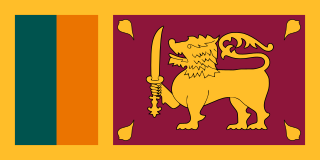 W
WMass media of Sri Lanka consist of several different types of communications media: television, radio, newspapers, magazines, and Web sites. State and private media operators provide services in the main languages Sinhala, Tamil and English. The government owns two major TV stations, radio networks operated by the Sri Lanka Broadcasting Corporation (SLBC), and newspaper titles in Sinhala, Tamil, and English.
 W
WThis article is about the media of Sudan
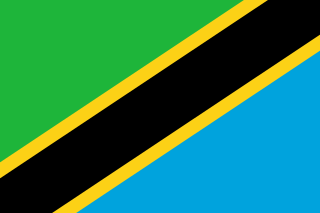 W
WMass media in Tanzania includes print, radio, television, and the Internet. The "Tanzania Communications Regulatory Act" of 2003 created the Tanzania Communications Regulatory Authority, which oversees broadcast licensing. The Media Council of Tanzania began in 1995.
 W
WThe mass media in Turkey includes a wide variety of domestic and foreign periodicals expressing disparate views, and domestic newspapers are extremely competitive. However, media ownership is concentrated in the hands of a few large private media groups which are typically part of wider conglomerates controlled by wealthy individuals, which limits the views that are presented. In addition, the companies are willing to use their influence to support their owners' wider business interests, including by trying to maintain friendly relations with the government. The media exert a strong influence on public opinion. Censorship in Turkey is also an issue, and in the 2000s Turkey has seen many journalists arrested and writers prosecuted. On Reporters Without Borders' Press Freedom Index it has fallen from being ranked around 100 in 2005 to around 150 in 2013.
 W
WThe mass media in Uganda includes print, television, radio and online sectors, and coverage is split between both state-run outlets and privately held outlets as well as English-language outlets and Luganda-language outlets.
 W
WThere are several different types of mass media in the United Kingdom: television, radio, newspapers, magazines and websites. The country also has a strong music industry. The United Kingdom has a diverse range of providers, the most prominent being the publicly owned public service broadcaster, the British Broadcasting Corporation (BBC). The BBC's largest competitors are ITV plc, which operates 13 of the 15 regional television broadcasters that make up the ITV Network, and American global media conglomerate Comcast, which owns the broadcaster Sky Ltd. Regional media is covered by local radio, television and print newspapers. Reach plc operates 240 local and regional newspapers, as well as national newspapers such as the Daily Mirror and the Sunday Mirror.
 W
WMass media in the United States consist of several types of media: television, radio, cinema, newspapers, magazines, and web sites. The U.S. also has a strong music industry. Many of the media are controlled by large for-profit corporations who reap revenue from advertising, subscriptions, and sale of copyrighted material. American media conglomerates tend to be leading global players, generating large revenues as well as large opposition in many parts of the world. With the passage of the Telecommunications Act of 1996, further deregulation and convergence are under way, leading to mega-mergers, further concentration of media ownership, and the emergence of multinational media conglomerates. These mergers enable tighter control of information. Currently, five corporations control roughly 90% of the media. Critics allege that localism, local news and other content at the community level, media spending and coverage of news, and diversity of ownership and views have suffered as a result of these processes of media concentration.
 W
WUruguay, officially the Oriental Republic of Uruguay, is a country in the southeastern region of South America. It borders Argentina to its west and southwest and Brazil to its north and northeast, with the Río de la Plata to the south and the Atlantic Ocean to the southeast. Uruguay is home to an estimated 3.51 million people, of whom 1.8 million live in the metropolitan area of its capital and largest city, Montevideo. With an area of approximately 176,000 square kilometers (68,000 sq mi), Uruguay is geographically the second-smallest nation in South America, after Suriname.